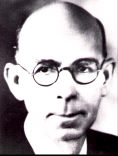|
Dedication
Service of The Historical Marker for Whitney Montgomery at Eureka,
Texas, Sept 10, 1967 Originally published in "The Navarro County Scroll", 1967 Reprinted with permission of the Navarro County Historical Society
At the outset, I would like to read a tribute to Mr. Montgomery by Dr. Arthur M. Sampley of North Texas State University, a leading poet and intimate friend of his. Dr. Simpley says:
The roots of Whitney Montgomery ran deep into Texas soil and he continued to write of that which he knew and loved even after he removed to the city. He let others write of bulldozers and skyscrapers and other earth-changers and sky-changers. On December 7, 1966, when Whitney died, one of the major voices of Texas was stilled. One of the founders of the Poetry Society of Texas in 1922, he achieved eminence in writing before many of us were born. But when we laid him beside his companion of the years in a cemetery at the edge of Dallas, we felt that he would be happy sleeping by an old fence row where the goldenrod scatters its seed, and he would welcome the crows when they flew over, crossing to a new stand of hickories. Whitney Maxwell Montgomery was born September 14, 1877 in Navarro County, in the old Montgomery home. Had he lived to the 14th of this month he would have been 90 years old. For years he remained happy in this environment, but the acres he tilled belonged to another earth. Like Burns, he dreamed as he plowed and wove his dreams into a song. He wrote in all over 250 poems, most of which are included in his four books: Corn Silks and Cotton Blossoms, Brown Fields and Bright Lights, Hounds in the Hills, and Joseph's Coat. But Whitney Montgomery was more that a poet; he was a maker of poets. With Vaida Stewart Montgomery, whom he married in June of 1927, he founded a poetry magazine, the Kaleidograph, and later the Kaleidograph Press, publishing over 500 volumes of poetry in 30 years. It is significant that nine of the books bearing this imprint won the Poetry Award of the Texas Institute of Letters. When Whitney came to Dallas, he was exposed to a different mode of life. He was plowing in new soil, but his furrows were still straight. The Montgomery home at 624 North Vernon was always a rallying place for visiting poets and friends of the family. I count it fortunate that my wife and myself were numbered among those who shared in this hospitality. On July 24, 1959, the happy association of 30 years came to an untimely end, with the death of Vaida Montgomery, and Whitney found himself unable to carry on alone. He was forced to discontinue the publication both of the magazine and books of poetry. Whitney Montgomery was not a seeker after fame. A few honors came his way unsought, and these he accepted with humility. No one was more surprised than he when, at the age of 78, he was given the honorary degree of Doctor of Literature from Southern Methodist University. The country boy whose formal education ended with the eight grade seemed out of place in his cap and gown as he marched with younger men to receive his sheep-skin, and no one was more conscious of this than he. Whatever his other accomplishments, his bid for fame must reset upon his place as a poet. Few of his generation excelled him as a writer of ballads. A sense of wonder at the marvels of nature. Identification with the life of the field and forest and sympathy for human need characterize his poems. Standing in a country grave yard he muses: "Here
they are sleeping He joins a company at a young girls funeral and sees scarlet berries some said were a mark of her shame, but he shakes his head as he turns away, and later he writes, the poem ending: "I
cannot say, I cannot say Sensitive to the deeper meaning of nature, he comes back from a walk in the woods to write down these works: "Alas
for the poets song, Now he is gone, and with him the way of life which he was a part. But when the last bluebonnet has been planted and plowed under, the last green meadow buried under concrete, the last rainbow canyon filled with slow water, that last singing lark gunned down, the blueness and the greenness of eternity will still be here in the words of Whitney Montgomery.
|
 We
came to commemorate the life of a great man, just how great many
will not realize. It is here, close to the old Montgomery home,
where Whitney Montgomery spent his early life that we set up and
dedicate the marker provided by the State Historical Association to
pay fitting tribute to one who was a true interpreter of an era and
a way of life that is fast passing away.
We
came to commemorate the life of a great man, just how great many
will not realize. It is here, close to the old Montgomery home,
where Whitney Montgomery spent his early life that we set up and
dedicate the marker provided by the State Historical Association to
pay fitting tribute to one who was a true interpreter of an era and
a way of life that is fast passing away.